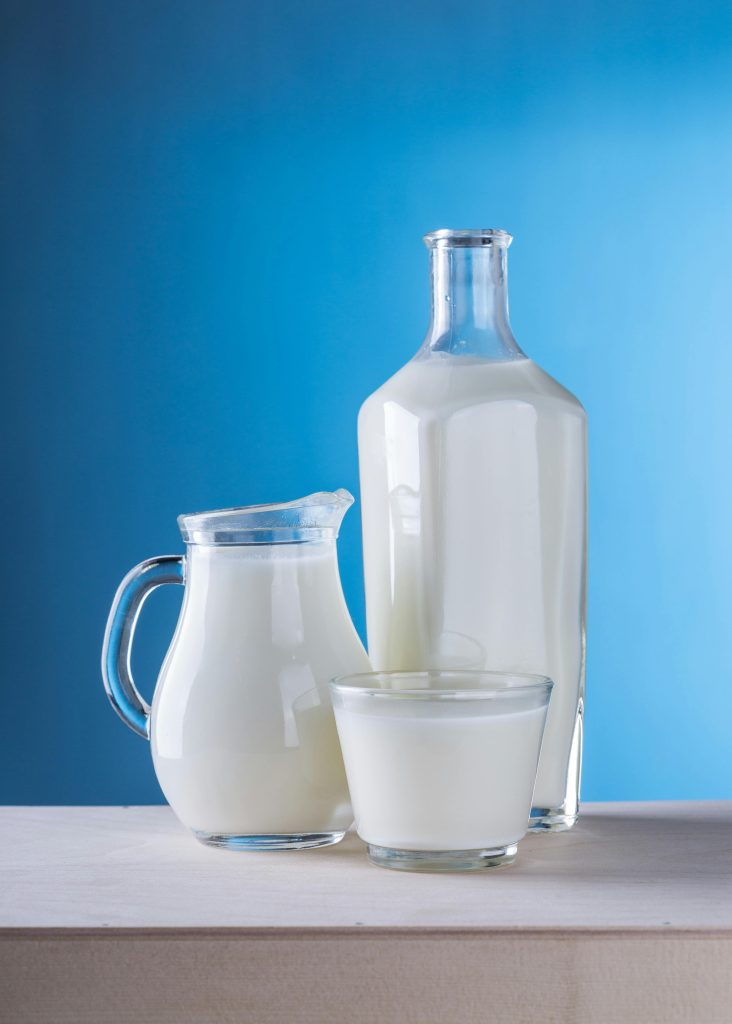This post contains affiliate links. Click here to read my affiliate policy.
Last Updated on March 4, 2024

Dairy products like butter, cheese, and cream are indispensable when creating diverse flavors and textures in our culinary endeavors. With a milky canvas, they add richness, depth, and a satiating touch that transforms a meal from ordinary to extraordinary. Favored by health-conscious foodies and nutrition enthusiasts alike, the adaptable nature of dairy is a shining example of how traditional ingredients can elevate modern cooking.
The butter foundation
Butter has been a trusted staple in kitchens for centuries, lauded for its ability to enrich and carry flavors throughout a dish. Butter melting on warm bread is a simple pleasure, but this fat goes beyond surface-level allure. Butter is an emulsion made out of milk fat and water with a trace of milk proteins, which permits it to perform various roles in cooking and baking—be it as a cooking medium, a base for sauces, or as an integral part of the baked good’s structure, flavor, and crumb.
In cuisine, butter is celebrated for its luxurious mouthfeel and nutty undertones, accentuating the characteristics of other ingredients. For health-conscious parents and individuals, the debate on the health impacts of butter has come full circle, with many experts now acknowledging the benefits of moderate butter consumption within a balanced diet. When sourced from grass-fed cows, butter can also provide a dose of omega-3 and -6 fatty acids.
The cheese connection
Cheese, the darling of dairy that ranges vastly in flavor, texture, and application, is a testament to dairy’s fermentative wonders. From the sharp bite of an aged cheddar to the silky pull of a fresh mozzarella, cheese adds dimension to dishes unwaveringly. The process of coagulation, which separates the milk solids from the whey, followed by aging, gives us varieties that challenge and delight the palate while providing nutritional benefits like calcium and protein.
The versatility of cheese in culinary applications is limitless. It can be the star ingredient in dishes like cheeseboards and fondue or a complementary player that finishes a dish like pasta or pizza. The health-conscious among us gravitate towards cheeses with probiotic benefits, like certain aged cheeses, which can support digestive health when enjoyed in moderation.
The creamy crest
Cream, the thicker, fat-rich layer skimmed from milk, is as multifaceted as indulgent. From light pouring creams to the more decadent double varieties, this component of milk is perfect for creating creamy sauces, enriching soups, and concocting dreamy desserts. Its high-fat content, essential for achieving the velvet texture in dishes, serves a dual purpose as it also conveys lipid-soluble flavors.
Create whipped cream deserts at home using a cream charger and a whipped cream dispenser, or whip up creamy classics like carbonara or chicken alfredo to elevate your weeknight dinners. Discover the ideal cream charger at https://www.nangwizard.net/nangs-delivery-newcastle/.
Integrating dairy into healthy diets
Indeed, the key to incorporating butter, cheese, and cream into one’s diet in a healthy manner lies in the principle of balance. The rich flavors and textures that dairy adds to meals can encourage a more diverse and satiating experience, reducing the tendency to overeat.
For instance, using a thin slice of sharp, flavorful cheese over a bland, low-fat alternative can lead to greater satisfaction with smaller amounts. Similarly, substituting skim milk with a splash of cream in coffee may add that touch of luxury and fullness, thus potentially reducing cravings for sweeteners or processed snacks later on.
Consciously curating dairy
Beyond personal health, increasing awareness of dairy ingredients’ source and production methods plays a significant role in consumers’ choices. Gradually, parents and individuals interested in nutrition are leaning towards organic, pasture-raised dairy products that promise a richer profile of nutrients and a better ethical and environmental footprint.
The burgeoning movement around artisanal and local dairies also equips consumers with more transparent options and a connection to their food’s origin. It brings to light the unique characteristics of regional dairy, for example, the nuances in flavor shaped by the local flora consumed by the cows.
Dairy’s place in world cuisines
What’s truly magical about dairy is its universal charm across various culinary traditions. While the Western hemisphere might favor a creamy béchamel or a plate of cheese-filled ravioli, many Asian cuisines use fermented dairy products to add tang to broths and curries. Meanwhile, brown butter forms the backbone of countless baked marvels in Scandinavian countries.
This cultural intersection of dairy shows that while it can enhance a dish’s richness, it’s not limited to heavy or indulgent meals. It can just as creatively be adapted to lighter, refreshing fare, melding seamlessly within the context of globally diverse plates.
Connecting over culinary creations
Cooking with dairy is more than a means to gratify hunger; it’s an invitation to explore culinary creativity, discover new cultures, and forge connections over shared meals. Whether through the communal joys of a cheese-topped pizza or the comfort of butter-laden mashed potatoes, these dairy delights bridge the gaps between people, making moments memorable through every savory bite.
For health-conscious foodies, parents, and enthusiasts worldwide, dairy remains a beloved contributor to the painting of their culinary masterpieces. Its ability to enhance dishes’ taste, appearance, and nutritional value secures its spot as an irreplaceable palette in cooking.
The bottom line
Dairy ingredients like butter, cheese, and cream have gone through fluctuations in public perception over the years. However, with more research and a shift towards mindful consumption, they are now recognized for their nutritional benefits and culinary versatility. By incorporating dairy into our diets in moderation and being conscious of sourcing and production methods, we can enjoy these ingredients’ multiple health benefits and cultural connections.

